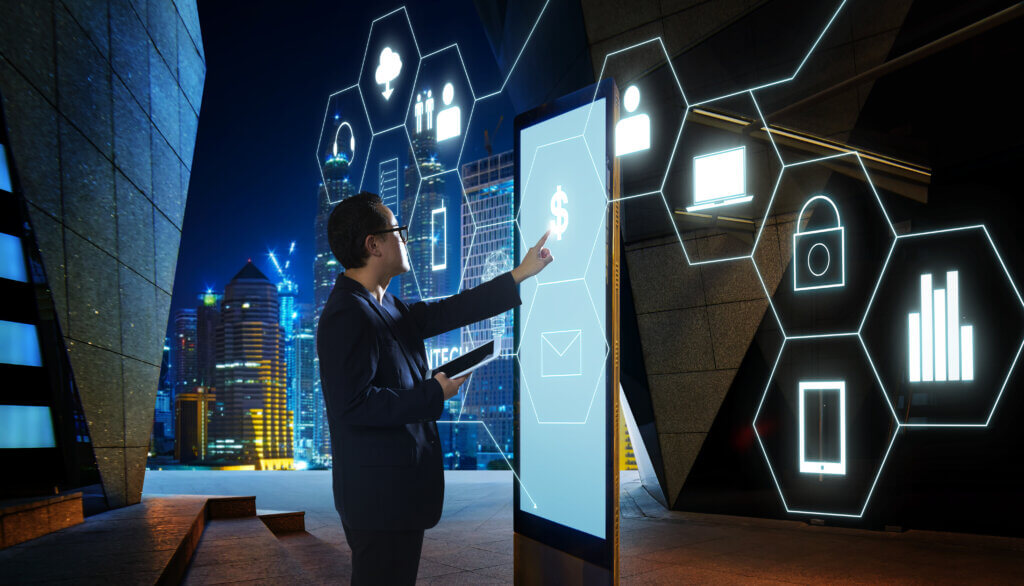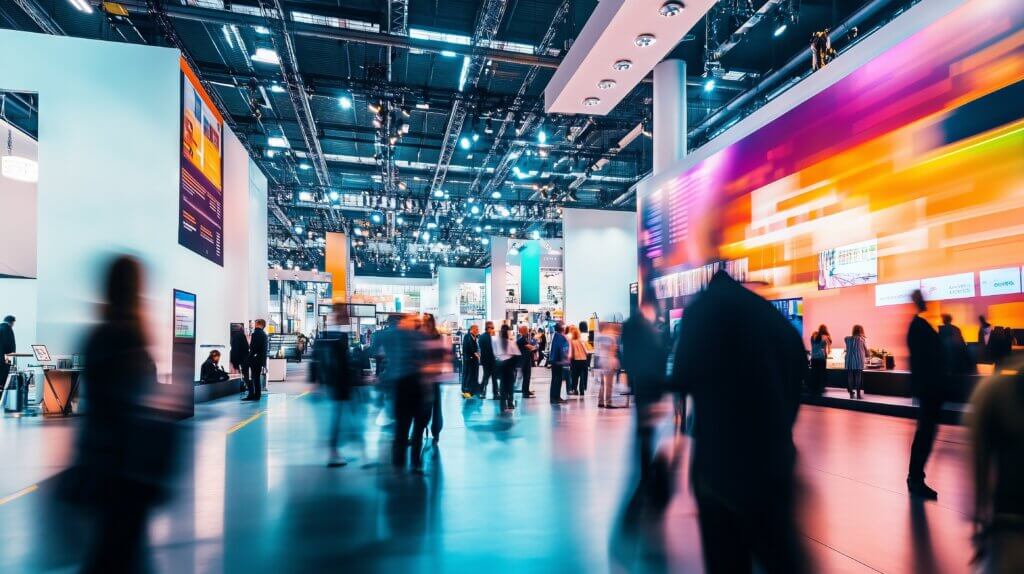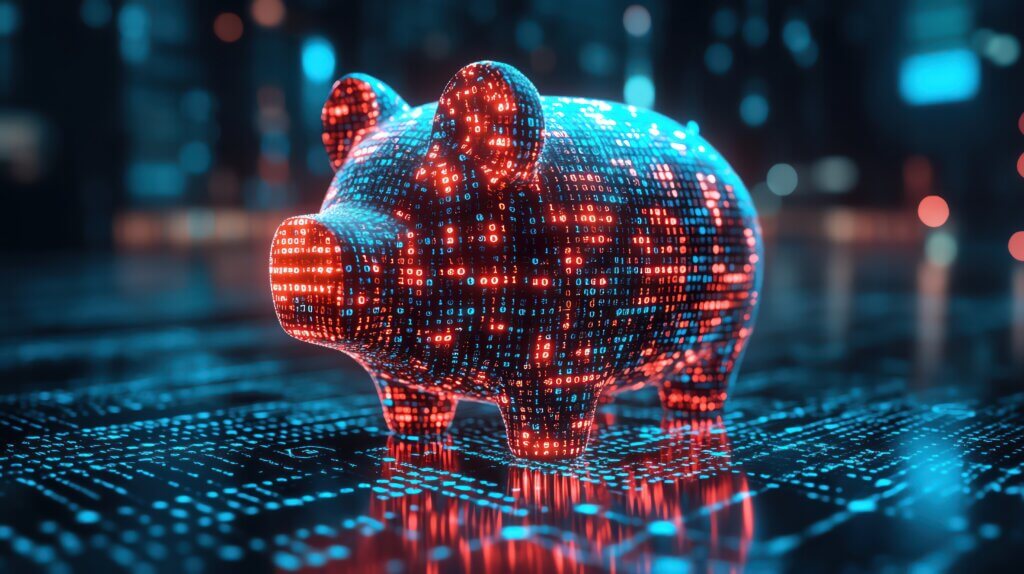Websites need to stand out, and the website trends for 2025 encapsulate this need. According to Adobe, 2025’s design landscape is all about balancing machine-generated efficiency with emotional resonance and visual individuality. That includes designs with bold shapes, retro maximalist illustrations, or layered human touches. These trends are not just about looking good, they are about feeling real in an increasingly automated digital world.
Table of Contents
1. AI-Generated but with a Pulse
The AI-driven design aesthetic is all about streamlined UX and clarity. Think: bold, simple headlines (often punctuated by a deliberate period) and classic, serif fonts reminiscent of Times New Roman. The layout is sparse but purposeful. Companies like The Landby embrace this frictionless design, guiding users through a clean, highly functional digital space where the message is front and center. While individuals have tried to differentiate themself from AI minimalism, through bright, bold, and maximalistic designs, some have embraced it, adding human touches. For instance, Locker, a place to pin and organize your shopping experience, has embraced the less-is-more mentality. Scrolling down the website is easy to maneuver as it shows you simplified phrases of their company’s objective and quotes from satisfied users.
2. Next-Gen Minimalism: Silence and Space as Design Tools
Minimalism is not new, but 2025 pushes it further, stripping away excess and letting white specs do the talking. Are.na and The Creative Independent are archetypes of this approach. Fonts, colors, and layout are restrained. Navigation is intuitive. It’s not just “less is more”—it’s “less is intentional.” Use this style when the content itself is the focal point (e.g., portfolios, media, or collaborative tools). Another standout is Carla Colour, which uses white space, large product imagery, and minimal copy. The front page is composed of only five photos, and when someone clicks on the photo, it takes the user to the desired product, ie: sunglasses. This minimalist approach of the vibrant product visuals punctuates the experience with personality-driven touches.
3. 3D and Motion Graphics: Adding Depth to Flat Design
As user expectations evolve, 3D and motion graphics are redefining how we interact with digital interfaces. No longer are websites just flat pages to scroll through, they are immersive environments. This trend incorporates everything from micro-interactions and subtle hover states to complex 3D-rendered environments and full-motion videos. These elements add depth, dynamism, and a sense of play, transforming static UIs into engaging, sensory experiences. Take Milkshake Studio as a prime example, when you land on their homepage, you’re immediately met with a dynamic video, not just as a background but as an intentional narrative device. The site’s clean typography and minimal color palette are elevated by the interactive scrolling and layered motion graphics, creating a sleek yet lively presentation. Similarly, Rive showcases how animation can be seamlessly integrated into UX. A looping video header sets the tone, as you scroll, video content auto-plays within modular boxes, maintaining constant engagement. These design choices transform the user journey into an interactive story, where every scroll feels purposeful and every frame invites exploration.
4. Interactive Scroll-Base Storytelling
The Dynamic Scroll-Base Experience is smooth scroll animations, parallax, and kinetic interfaces that create immersive browsing. Best exemplified, and personally my favorite website to scroll through yet, is Uplink. The user experience starts with a 3D rotating globe that instantly hooks the individual to the website. From there, by simply scrolling down, the users are brought through a dynamic, interactive journey that introduces them to the company. As the rotating globe kicks off the user journey, the web design is engaging and creates a memorable, narrative-driven user journeys. This trend will continue and skyrocket in the age of AI, as it provides a futuristic aesthetic that captures people’s attention quickly, becoming even more relevant.
5. Retro Maximalist: Analog Energy in a Digital Age
The Retro Maximalist is a vibrant aesthetic that rebels against the sterile minimalism that dominates much of today’s digital designs. This style brings analog warmth back to the screen through bold, saturated colors, pixelation, grainy textures, and chunky retro typefaces. It’s a nostalgic blend of 1970s psychedelia and early 1990s pop culture, often featuring bold geometric shapes and visual noise that mimics old VHS tapes or arcade screens. The result is an energetic, visually rich experience that taps into collective memories of a pre-digital era. A perfect example is Dopple Press, which embraces this aesthetic with confidence. As Wix brings to light the fact that Dopple Press uses large retro fonts, gritty overlays, and a vivid color palette that commands attention and evokes tactile, analog sensations in a digital space. This style speaks directly to users longing for the imperfections and emotional texture of vintage media.
6. Neo-Brutalism: Raw, Edgy, and Unapologetic
Neo-brutalism breaks every rule of clean, conventional web design—and that’s exactly the point. Embracing harsh visual contrasts, raw textures, system-default fonts, and fragmented grid structures, this trend is bold, confrontational, and unfiltered. It resonates with brands looking to disrupt the norm, create tension, and foster honest communication. A strong representation of this aesthetic is 99% Invisible. Its design leverages jarring graphic blocks and a utilitarian layout that feels more functional than ornamental. The site’s use of grey tones with splashes of yellow invokes a sense of investigation or inquiry, fitting for a platform that dissects the unnoticed architecture of the world. The grid-breaking format and stark visuals create a journalistic tone—serious, direct, and visually raw—perfectly aligning with the content’s intent.

Up-level Your Digital Presence Now
If you were inspired by these 2025 trends, let’s chat. Elevate your online experience and don’t let your digital presence fall behind.






